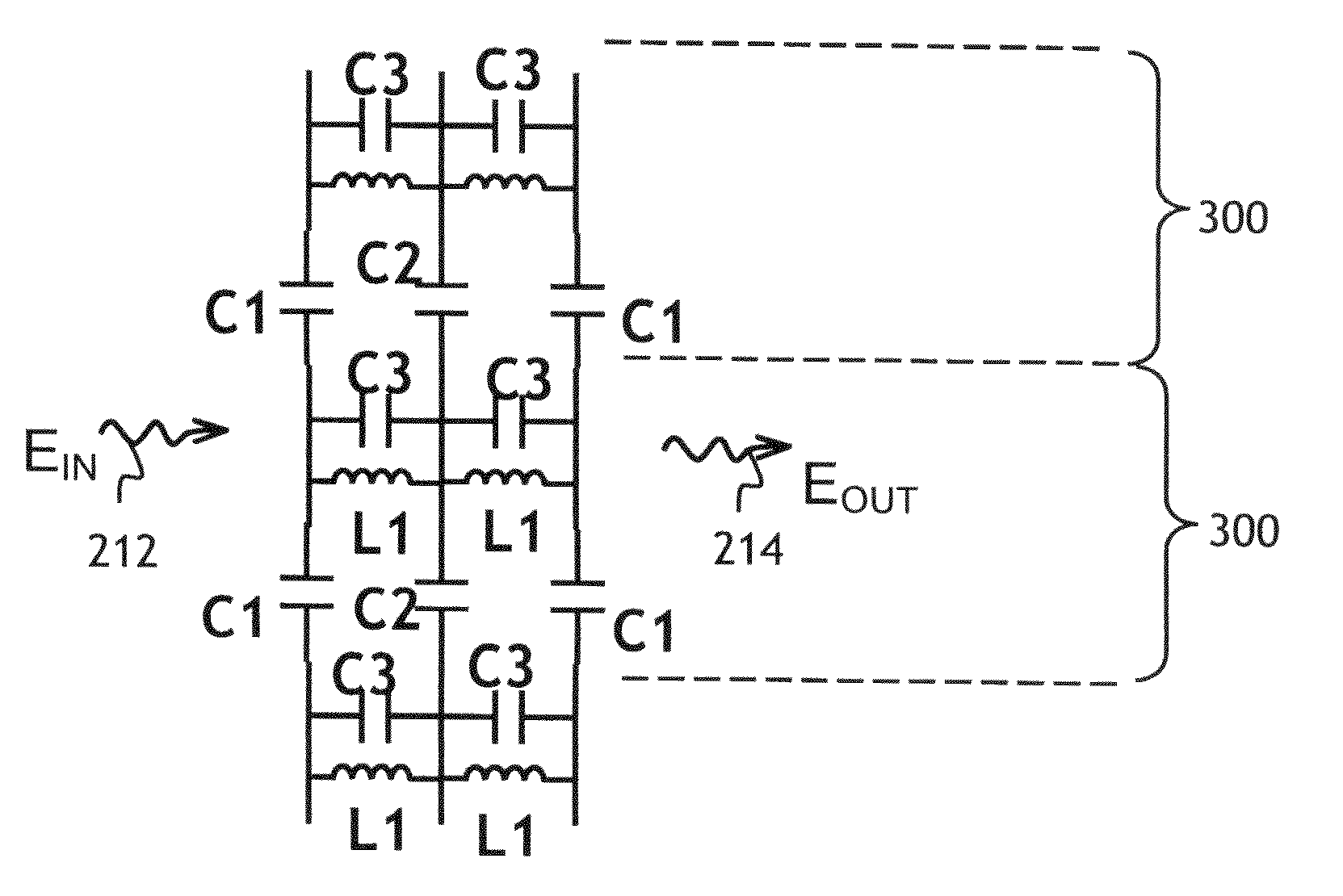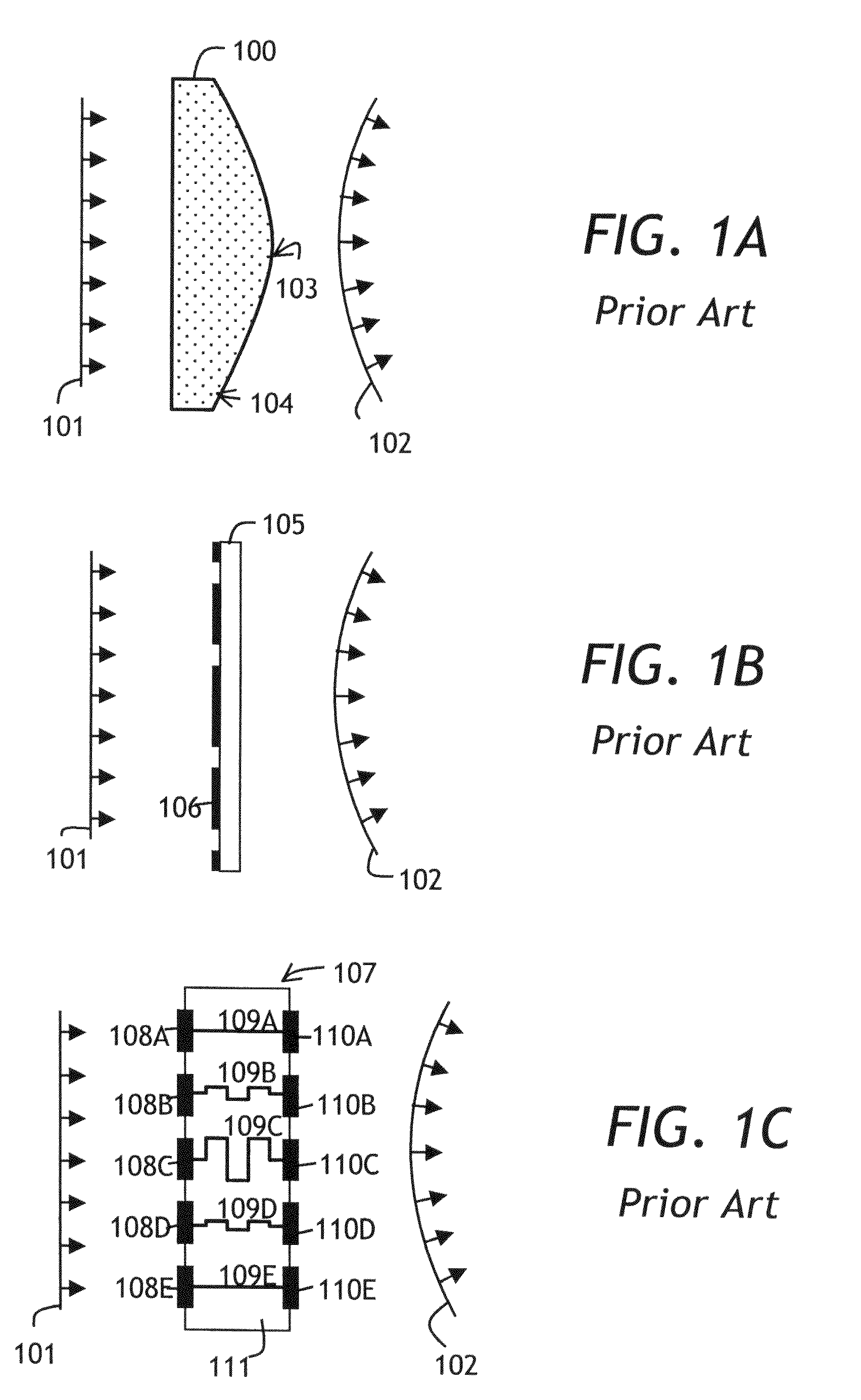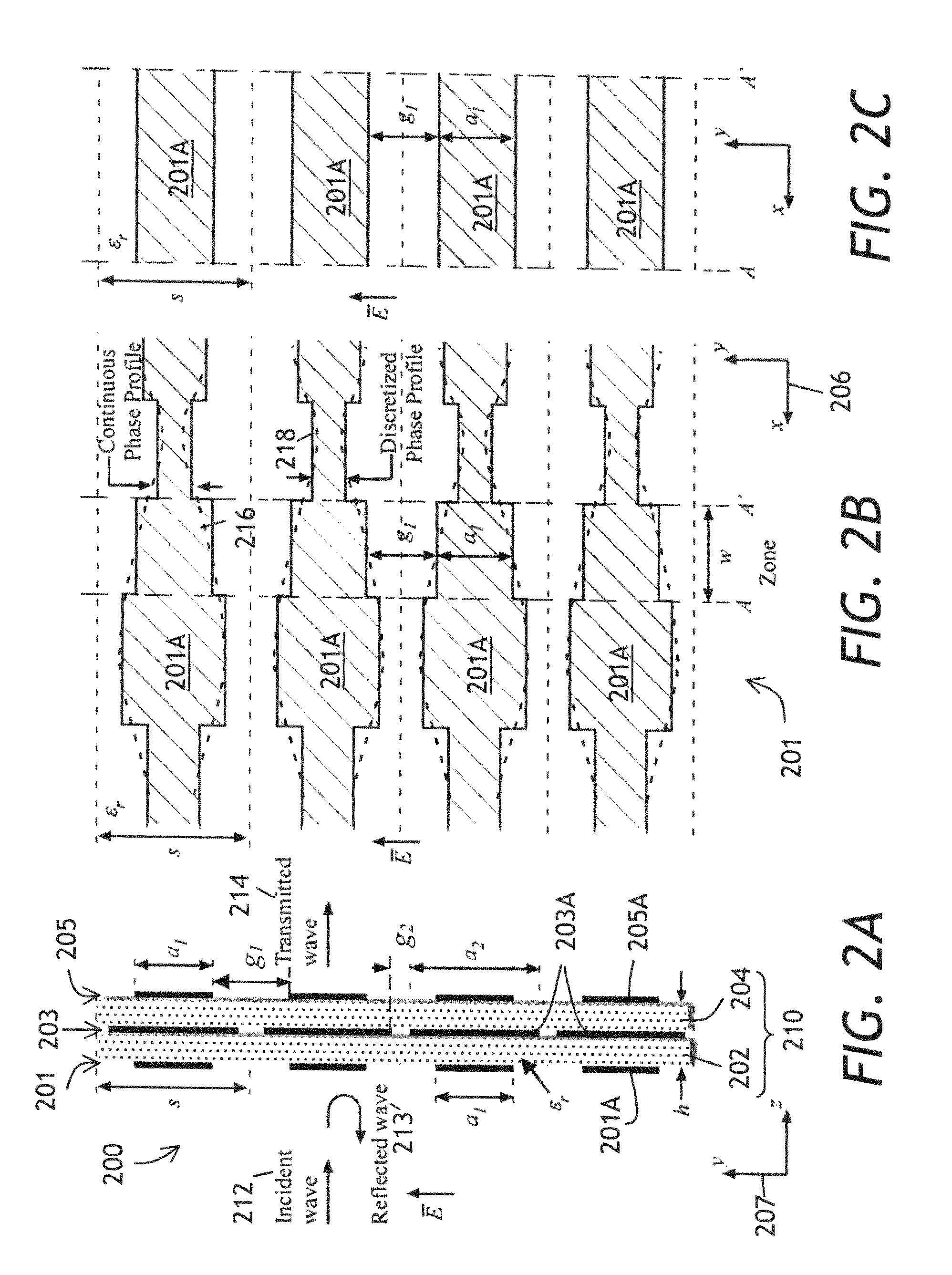Phase element for introducing a phase shift pattern into an electromagnetic wave
a phase element and phase shift technology, applied in the field of phase or amplitude shifting elements, can solve the problems of significant decoupling of achievable phase and amplitude shift patterns, corresponding increase of transmission losses, etc., and achieve low amplitude shift, low cost, and increase of transmission losses
- Summary
- Abstract
- Description
- Claims
- Application Information
AI Technical Summary
Benefits of technology
Problems solved by technology
Method used
Image
Examples
Embodiment Construction
[0065]While the present teachings are described in conjunction with various embodiments and examples, it is not intended that the present teachings be limited to such embodiments. On the contrary, the present teachings encompass various alternatives, modifications and equivalents, as will be appreciated by those of skill in the art.
[0066]Throughout the specification, the phase element of the invention is called a “phase and amplitude shifting surface” (PASS) or a “phase shifting surface” (PSS). Herein, the word “surface” is used to refer to an “electrically thin” element, that is an element whose lateral dimensions are much smaller than a wavelength of the electromagnetic wave propagating through the element. The PSS is an element that alters phase distribution of the electromagnetic wave, while introducing a negligible transmission loss.
[0067]Referring to FIGS. 2A to 2C, a PSS, or a phase element 200 of the invention is shown in side and plan views. In FIG. 2A, a side cross-section...
PUM
 Login to View More
Login to View More Abstract
Description
Claims
Application Information
 Login to View More
Login to View More - R&D
- Intellectual Property
- Life Sciences
- Materials
- Tech Scout
- Unparalleled Data Quality
- Higher Quality Content
- 60% Fewer Hallucinations
Browse by: Latest US Patents, China's latest patents, Technical Efficacy Thesaurus, Application Domain, Technology Topic, Popular Technical Reports.
© 2025 PatSnap. All rights reserved.Legal|Privacy policy|Modern Slavery Act Transparency Statement|Sitemap|About US| Contact US: help@patsnap.com



